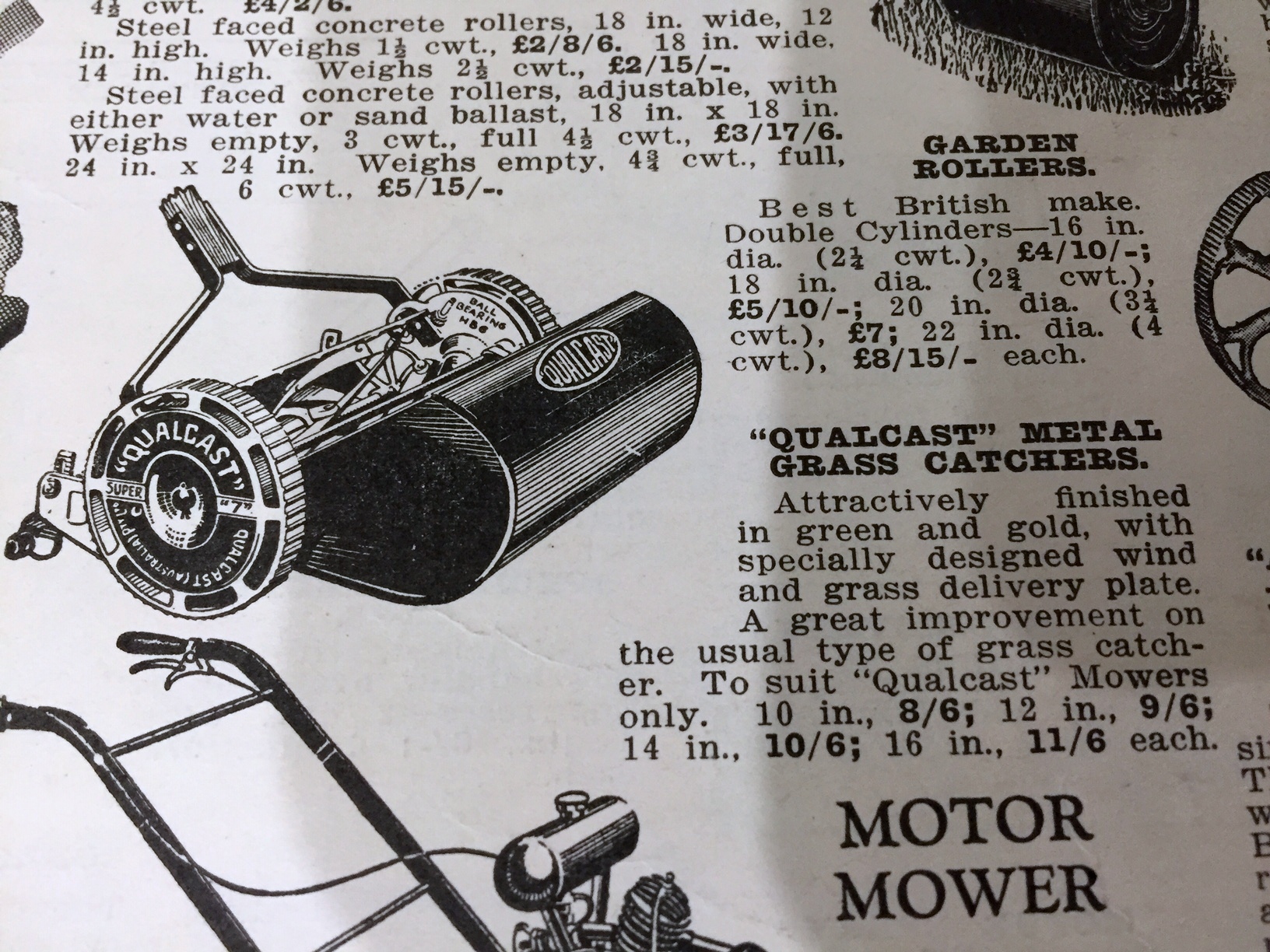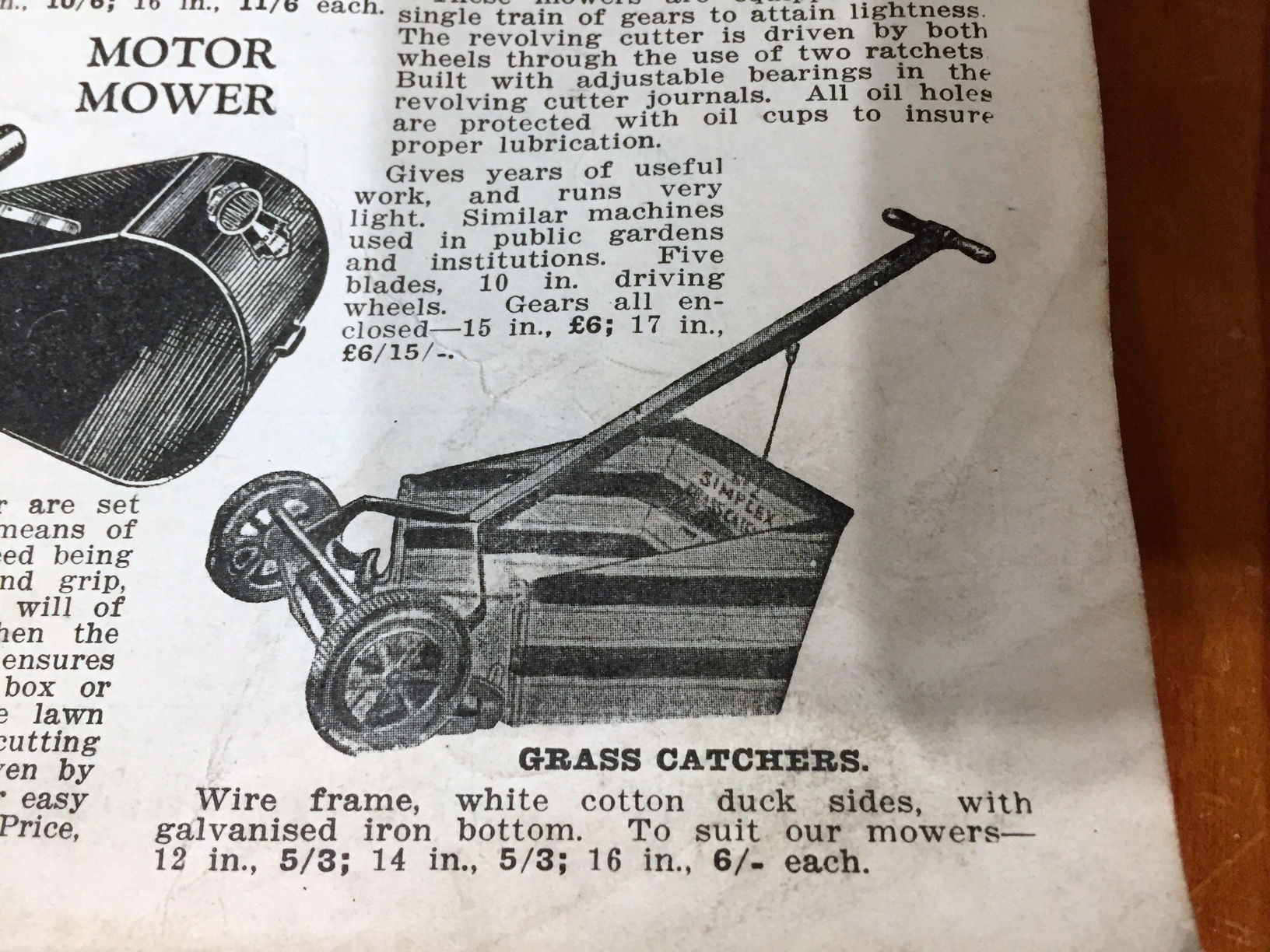Qualcast Model 'E'. Handle repair, throw place. Is it an early one?
Hi Guys,
Just purchased this Qualcast Model 'E' for £10!!
From what I've read it's a rather early one? Judging by the Blue/Red colour scheme.
It's actually in really good condition, and looks to have been maintained until quite recently (blades are fairly sharp still). I find it really cool that it has the retailers plaque on the handle - James Gray & Son, Edinburgh. which is where I am!) 'Gray's' was very well-known in Edinburgh, and was still going until about 10-15 years ago.
I have a couple of questions if anyone can point me in the right direction:
Did it ever have a throw plate? I know grass boxes were an additional extra at the time. Maybe this never had a grassbox therefore no need to direct the grass?
I'm going to attempt to repair the handle with a Scarf joint (never done it before). Any tips on what kind of wood this may be? The wide grain feels like Oak/Ash sort of thing.
If anyone has any photos of a model E, especially with throw plate, it would be great to see.
Thanks, Joe
Forums
The blue and red colour
The blue and red colour scheme is normal for Model Es, but this looks quite a late one to me. Clues are the angular bow irons and the steel 'spiders' on the cylinder. If it has ball bearings, it will be mid-to-late 1930s; if bronze, post-war, one of the last Model Es before E1 and B1 took over.
Grassboxes were optional extras on side-wheel mowers, and throw-plates came with the grassbox. There appear to be no wear marks on the tie-rod where a grassbox would have fitted, so this one probably never had a grassbox or a throw-plate.
The handles are normally beech, and this looks as if it is no exception, although the cross-bar looks more like ash. That is unusual on a Qualcast, but is a clue that this might be post-war; timber, like so much else, was hard to come by, and manufacturers had to use whatever they could lay hands on. If you do not have the piece that is split off, then plane the split surface dead flat, cut a piece of beech to a matching taper but a bit oversize all-round, plane its mating face to a perfect fit and glue it together, cramp and leave overnight. Then plane all three surface level with the original. It's a good long contact surface, so it shouldn't need any extra reinforcement, though a screw from the underside between the two bolt holes might be wise.

Here in Australia our most
Here in Australia our most common Qualcast made in Australia was the model H, and a fair percentage of these mowers used the rear catcher so did not require the deflector plate. It was not until the rubber tyred Qualcasts came on the market that we saw the more common today front catcher.
My maternal Grandfather had a mower sharpening business which I took over when he was not well enough to continue, and to see the hook in the underside of the mower handle was quite common, this hook was where the rear catcher attached to the mower.
In the attached photos you can see that both catchers were available in the day (these photos taken out of a 1935 D & W Chandlers Catalogue) but I suppose price may have played a part in the decision of which catcher to buy, and also the rear catcher allowed you to mow much closer to things.
That is bad luck with your handle, I take it you do not have the piece that has split off, otherwise you could probably screw and glue it back on also add a couple of small dowels that would add strength. Good luck with the mower a good old machine and simple to work on.
Geoff.
